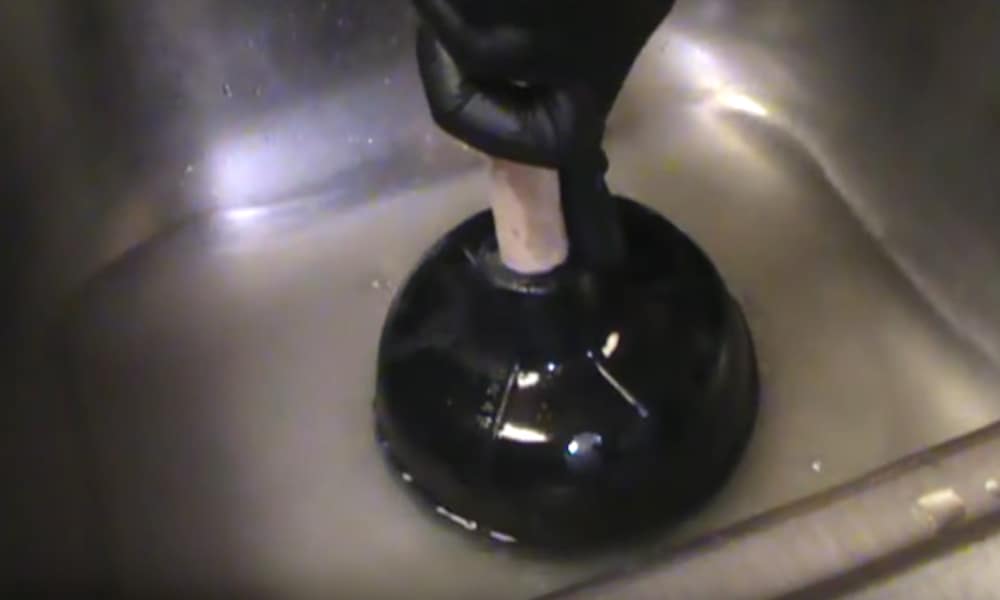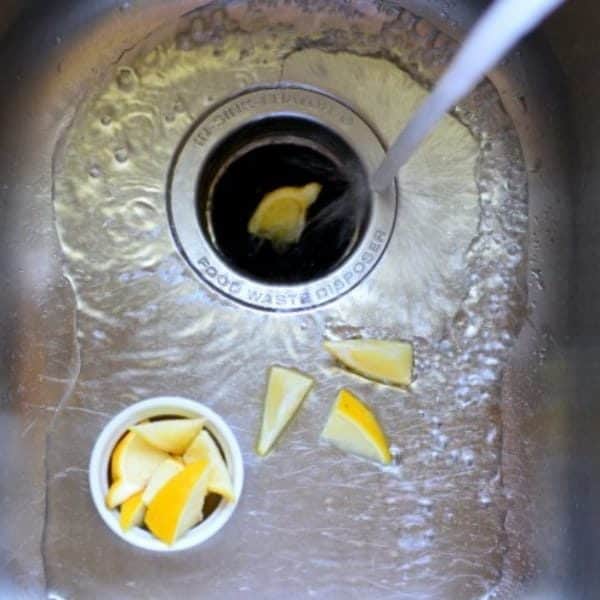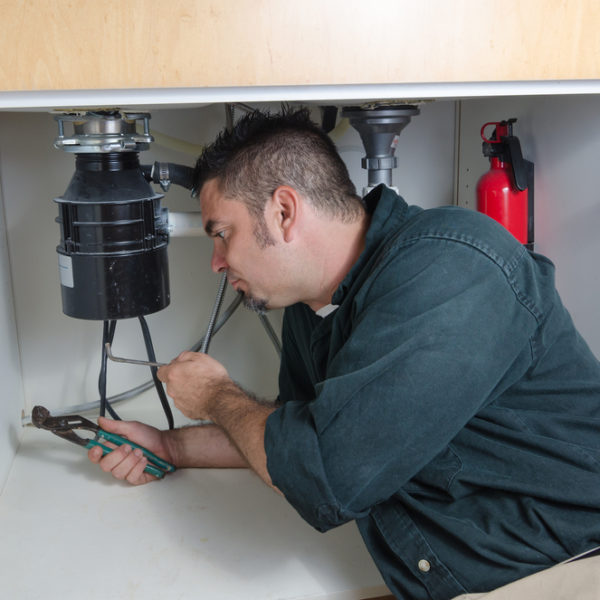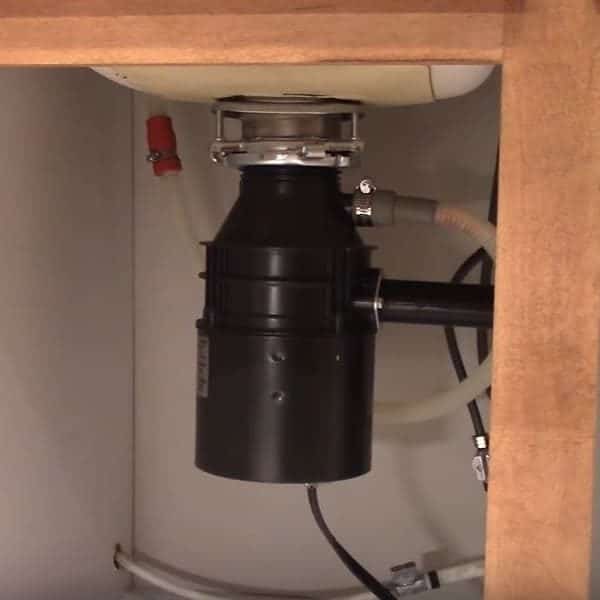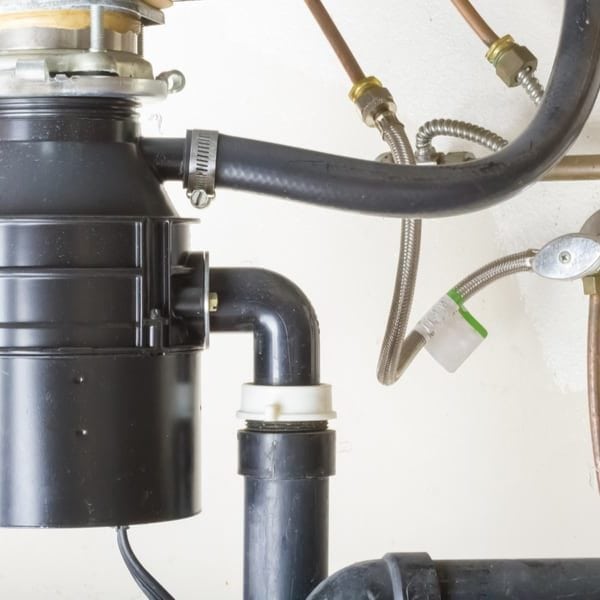Has your garbage disposal stopped working suddenly? You might experience some issues with the appliance. For instance, the unit could trip off or make strange noises.
But before you ask yourself, why my garbage disposal stopped working, it will be best you know what could cause such problem. In this article, we will reveal to you reasons garbage disposal not working, and easy steps on how to fix it.
Why Is My Garbage Disposal Not Working and How to Fix It?
1. Power Issues – Garbage Disposal Can’t Turn On
If your unit does not make a humming sound, especially if you hit the power button, then your disposal needs some repairs.
If you plan to solve the issue, look for the most apparent cause with simple solutions. If this approach does not work, then you should move towards advanced methods. Let’s get started with the following steps.
- Check your garbage disposer’s plug and ensure it’s well connected. Even if it looks like a simple fix, many companies report that many customers forget to plug-in their appliance to a power source.
- If connected to a socket, move to the base of the disposal and hit the reset switch. Since the button controls an onboard circuit breaker, it extends outwards, mainly when tripped. Push the button to reset the functions of the disposer.
- If pressing the button does not turn on your disposer, look for a tripped fuse at the main panel. When you see one, use its lever in that spot.
- Is your garbage disposal not working after you have used the reset button or circuit breaker? Well, you might have a faulty wire on the device that controls the unit. It could also have problems with the disposer itself. Solve both issues with these steps
- Look for the component that controls the operations of your garbage disposer unit. Most times, it stays along the kitchen wall. However, you can find it under the kitchen sink.
- Disconnect the circuit breaker that supplies current to the garbage disposer. You can find this component inside the service panel located on the unit.
- Detach the switch which controls the disposal. Remember to check it for loose cables. Sometimes, a poor connection might stand as the cause of your faulty unit. You can solve this problem by securing the cables.
- To test if you have solved the problem, try to power up the panel. But if the unit does not come on, you should consider changing the power switch.
- Turn on the unit again. Is the motor running, or did the grinder come on? If it does not, you will have to get a new unit and dump the existing one.
2. Jammed Flywheel
Does your unit make a humming noise even if it does not come on? If yes, then you have a stuck flywheel that resets the waste disposal, especially when you turn it on. It even affects the way a circuit breaker works.
If this continues, a jammed flywheel can result in a burnt motor. However, a circuit breaker or reset button can turn off the unit before it overheats.
Luckily, you can use the following steps to resolve this issue without any technical skills or tools. At this stage, do not place your hand into the grinding chamber.
- Head to the main service panel and turn off the circuit breaker. You should also switch it off from the wall socket.
- Bring out a wrench (most disposer units have this tool) and turn the flywheel. If you can’t find one, you could buy it from a retail store. A huge hex wrench also comes as a suitable option.
- Rotate the wrench to loosen the jammed flywheel or impeller. As soon as it’s free, it will turn with ease.
- You can also use wooden kitchenware or any object of the same material. Insert the object and use it as a tool to release the jammed flywheel. With enough force, the wheel will become free.
- Check for food residue or chinaware that can clog the flywheel. For a complete inspection, look into the unit with a flashlight. If you find any foreign object, take out the item with a pair of pliers.
- After freeing the flywheel, switch on the power on the service panel of the unit. However, do not power up the device from the power switch.
- Return to the switch that resets the unit when you find it hit the switch.
- Turn on the faucet and run some fresh water into the food waste grinder and quickly turn on and off the disposer. Switch on and then off for a second time. With this action, the flywheel will rotate, thereby flushing unwanted residue out from the disposal.
3. Leaky Components
One of the reasons garbage disposal not working can be as result to leaks from the unit itself or various parts connected to it. To solve this problem. First, switch off the disposal at its bottom. Check for the disposal mount and detach (with anticlockwise movements) from the base.
After separating the disposal from its mount, you will discover a set of three mounting bolts. Secure these bolts to guard against potential leaks.
If this method doesn’t work, inspect other parts of the unit. Below are some of the common places to have leaks.
Leaky Sink Flange
Since garbage disposal shakes during use, it can loosen the component that connects the sink drain to itself. As a result, the kitchen sink mounting flange could leaks or drips. To fix this:
- Disconnect the power to the unit via the fuse in the panel. Reach under the sink and get to the mounting ring of the disposal. Rotate the garbage disposer with anticlockwise and remove it from the threaded metal ring.
- Secure the mounting bolts that attach the flange to your sink. If screwed tightly, a delicate piece of plumber’s putty comes as the culprit. Unscrew the bolts and move the sink flange a few inches above the top of the sink.
- Get some fresh plumber putty and place amidst the sink and its flange. Ensure the substance covers all sides of the flat collar.
- Screw in the provided bolts to build a secured attachment between the collar and the surface of the sink. If you notice any putty coming out, clean this substance thoroughly.
- Reassemble the unit and switch on the current using the panel on the unit. Turn on the faucet and check for any leakages.
A Leaky Dishwasher Connection
If you use a modern type, you will notice that it connects with the drainpipes of a dishwasher. This feature helps the dishwashing machine to take out any waste that might gather in it.
Unfortunately, this area stands as one of the notorious spots for leakages. Most times, cracks on a dishwasher or loose hose clamp can lead to this problem. Fix this issue with the following tips.
- Make the dishwasher hose secure by tightening its clamp. Here, the tube connects to a dedicated pipe that supplies the sink waste grinder.
- If you still notice any water dripping from the pipe, get a new hose.
A Leaky Discharge Drainpipe
Since this spot comes as a common site for leaks, try checking the area where your garbage disposal unit meets your drain line. Here, you should find two lines- a dishwasher discharge line and a sewer discharge tube. Ensure you have tight bolts on these fittings.
If you still have drips, consider changing the mechanical seal amidst the tube and the disposer. Begin by removing the holding bolts and tube, swap the seal, and secure the bolts.
4. Faulty or Cracked Garbage Disposal
After checking and fixing the part mentioned above and it still doesn’t work, you should check for cracks or damp spots on the disposal. If you find any, consider getting a new unit.
So how does disposal have this damage? Well, when you want to retrieve any items from a nearby storage space, an accidental hit on the unit can push or crack the body. Avoid this scenario by changing the position of a new unit.
5. Clogs
Is your garbage disposal not working or draining? Then a kitchen sink blockage could be the problem. When this happens, the water doesn’t leave the sink due to hair, debris, or greasy waste.
Clearing a Clogged sink requires a few steps. First, switch off the disposal and half fill the unit with a soapy solution. Work the sink drain with a cup plunger for between 30 seconds to 1 minute. If the clog remains, use a snake.
But never pour a chemical cleaner into a garbage disposer. Since it can corrode metallic components, you should avoid using it when the garbage disposal not working due to solid objects or food material.
When you follow these rules, you should have fewer clogs in your disposer. That means fewer repairs or replacements, thereby saving you money.
How to Prevent Your Garbage Disposer Unit from Damage
It’s advisable you avoid any problems from the beginning even if you know how to handle the reasons garbage disposal not working. With that said, before washing tries to remove and throw hard materials such as celery or carrot in the trash.
You can also dispose them in a compost heap, mainly if they do not contain meat. To clean the unit, you should also turn on a faucet and allow the water to run into the disposer. For a complete cleanse, turn on the appliance for a few seconds.
How to Safely Fix a Garbage Disposal Not Working
Before trying to work on the disposal, you should follow some simple rules to prevent accidents. First, do not place your hands into it even if turned off. Rather, if you want to work inside the appliance, wedge the parts or inspect the blades with a wooden item.
Wrap Up
Using a kitchen sink with damaged Garbage disposal can be frustrating. Since it plays a vital role in your home, you should find easy ways to handle any defect that could make the Garbage disposal stop working.
With this guide, you can perform fixes on common problems like when your garbage disposal not turning on but humming. Remember not to place your fingers into the device and ensure to switch it off before carrying any repairs.


